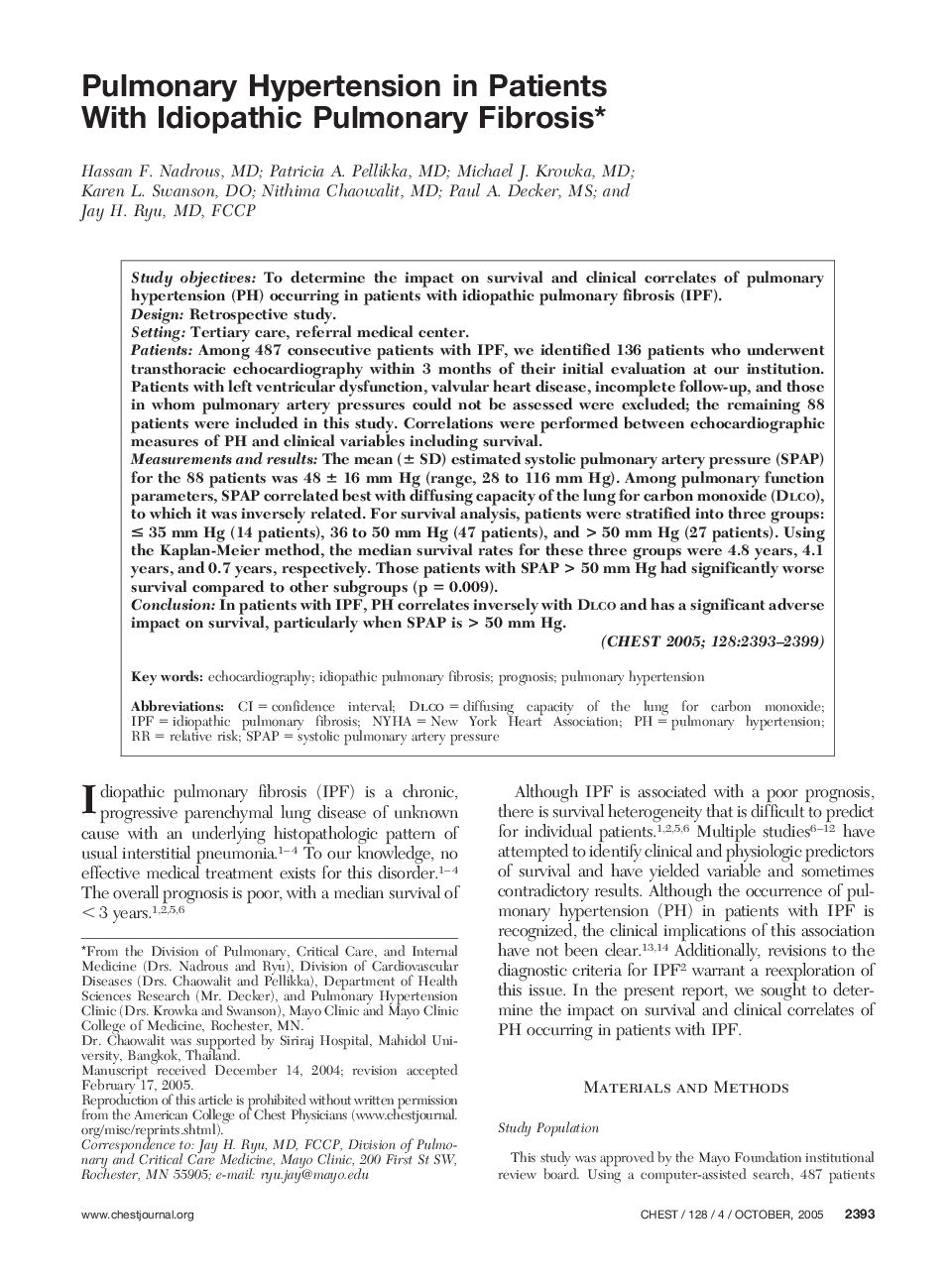| Article ID | Journal | Published Year | Pages | File Type |
|---|---|---|---|---|
| 2907126 | Chest | 2005 | 7 Pages |
Study objectivesTo determine the impact on survival and clinical correlates of pulmonary hypertension (PH) occurring in patients with idiopathic pulmonary fibrosis (IPF).DesignRetrospective study.SettingTertiary care, referral medical center.PatientsAmong 487 consecutive patients with IPF, we identified 136 patients who underwent transthoracic echocardiography within 3 months of their initial evaluation at our institution. Patients with left ventricular dysfunction, valvular heart disease, incomplete follow-up, and those in whom pulmonary artery pressures could not be assessed were excluded; the remaining 88 patients were included in this study. Correlations were performed between echocardiographic measures of PH and clinical variables including survival.Measurements and resultsThe mean (± SD) estimated systolic pulmonary artery pressure (SPAP) for the 88 patients was 48 ± 16 mm Hg (range, 28 to 116 mm Hg). Among pulmonary function parameters, SPAP correlated best with diffusing capacity of the lung for carbon monoxide (Dlco), to which it was inversely related. For survival analysis, patients were stratified into three groups: ≤ 35 mm Hg (14 patients), 36 to 50 mm Hg (47 patients), and > 50 mm Hg (27 patients). Using the Kaplan-Meier method, the median survival rates for these three groups were 4.8 years, 4.1 years, and 0.7 years, respectively. Those patients with SPAP > 50 mm Hg had significantly worse survival compared to other subgroups (p = 0.009).ConclusionIn patients with IPF, PH correlates inversely with Dlco and has a significant adverse impact on survival, particularly when SPAP is > 50 mm Hg.
